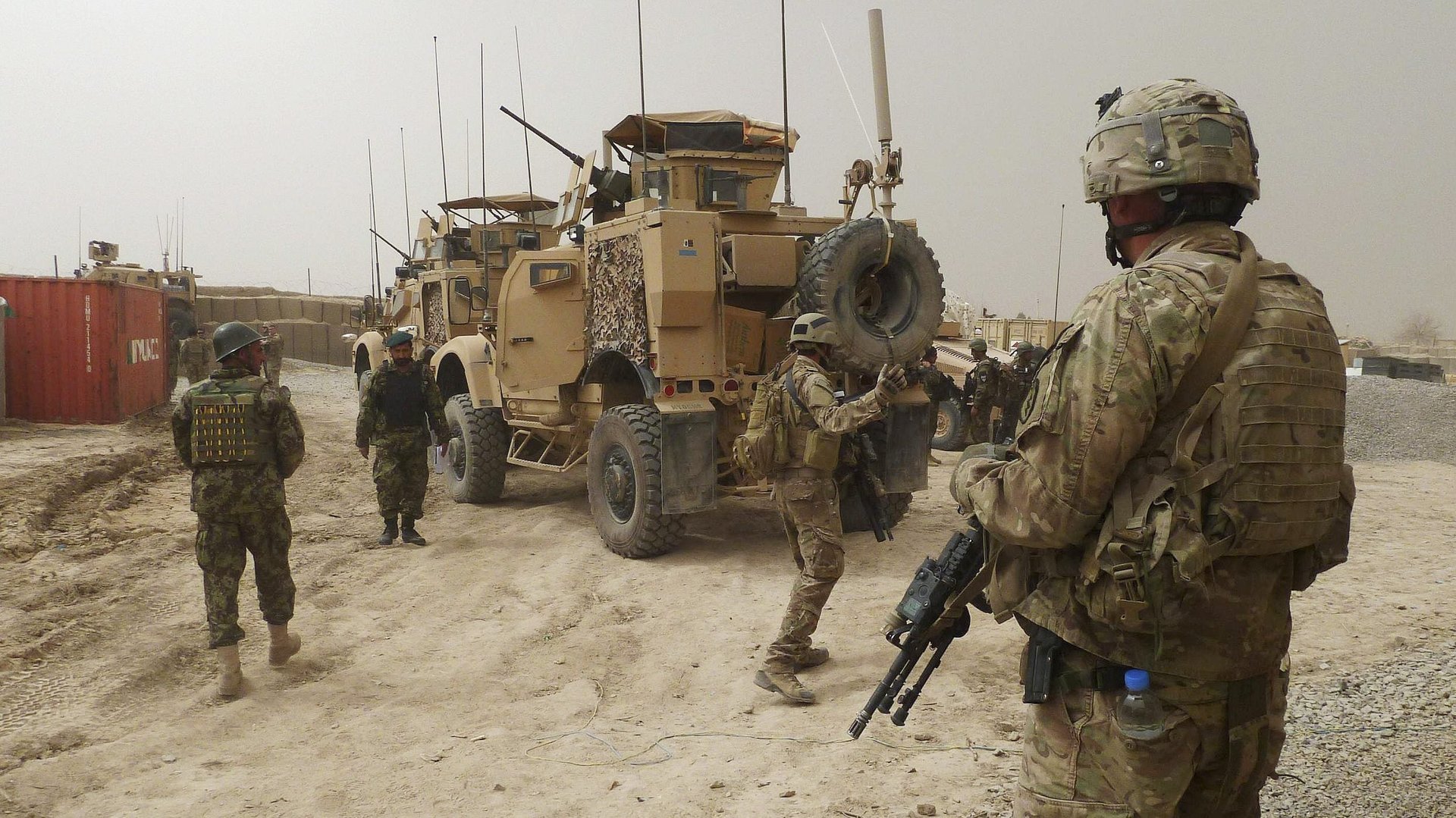A timeline of US engagement in Afghanistan
Following the Taliban’s capture of Kabul on Aug. 15, the two-decade American era in Afghanistan appears to be finally over, and it is worth reflecting on what led up to this point. Below is an overview of some of key periods in the conflict.


Following the Taliban’s capture of Kabul on Aug. 15, the two-decade American era in Afghanistan appears to be finally over, and it is worth reflecting on what led up to this point. Below is an overview of some of key periods in the conflict.
The George W. Bush administration
The US entered Afghanistan as part of its War on Terror following 9/11, with a goal of defeating Al-Qaeda and the Taliban. But what was intended to be a quick and decisive show of force turned into a long and deadly war.
- 2001: The Sept.11 attacks on the World Trade Center and the Pentagon marked the beginning of the War on Terror. The US invaded Afghanistan.
- 2003: In May, US defense secretary Donald Rumsfeld announced that “major combat” operations had ended in the country, and that efforts would be shifted to reconstruction.
- 2004-2006: Several years of fighting ensued between a US-led military coalition and the Taliban. In this time, the Afghanistan government (with US support) established a new constitution, and elected Hamid Karzai as president. By mid-2006, Taliban forces were resurgent.
The Obama administration
The early Barack Obama years were marked by an increased US presence in Afghanistan. After overseeing the killing of Osama bin Laden, Obama set out a plan to leave Afghanistan in his second term.
- 2009-2010: Obama made a renewed commitment to Afghanistan. This included sending a surge of 17,000 troops to the country in Feb. 2009, and shifting strategy to focus on fighting Taliban and Al-Qaeda militants in Pakistan as well.
- 2011: US Navy SEALS carried out a successful mission to kill Osama bin Laden.
- 2013: NATO forces (led by the US) officially handed over security responsibility to Afghan military forces. The US military stayed on mostly in a training capacity and for specific counterterrorism efforts.
- 2014: President Obama announced a timeline for the withdrawal of US troops, but the Taliban were once again active in various parts of the country, and the Americans stayed longer.
The Trump administration
In a reversal of policy, Trump initially escalated engagement and promised to “fight to win.” Trump did eventually withdraw some forces, but Taliban power continued to grow. There were unsuccessful peace talks between the US, Taliban, and Afghan governments.
- 2017: In August, president Trump introduced a new policy towards Afghanistan, ramping up the US presence on the ground for as long as it took to win instead of focusing on timetables for withdrawal.
- 2019: The Taliban and US government entered a round of peace talks that one US special envoy described as “more productive than they have been in the past.” The two sides reached a tentative peace agreement that involves US withdrawal of troops and a commitment that the Taliban will not harbor other jihadist groups. By September, Trump had canceled the deal.
- 2020: In February, US and Taliban leaders signed a peace deal, but it didn’t hold; conflict quickly resumed. In November, the Pentagon announced plans to withdraw troops as Trump’s presidency ended.
The Biden administration
Biden came into office with a commitment to ending the US’ war in Afghanistan. This approach has garnered criticism for the humanitarian and national security crises that could arise from the absence of US forces in the region.
- 2021: As president-elect, Joe Biden promised to withdraw all US troops from Afghanistan. By April, he said that this process would be complete by September, on the 20th anniversary of the 9/11 attacks. As the Taliban closed in on Kabul in August, Biden temporarily deployed a total of 5,000 troops to evacuate US embassy personnel.